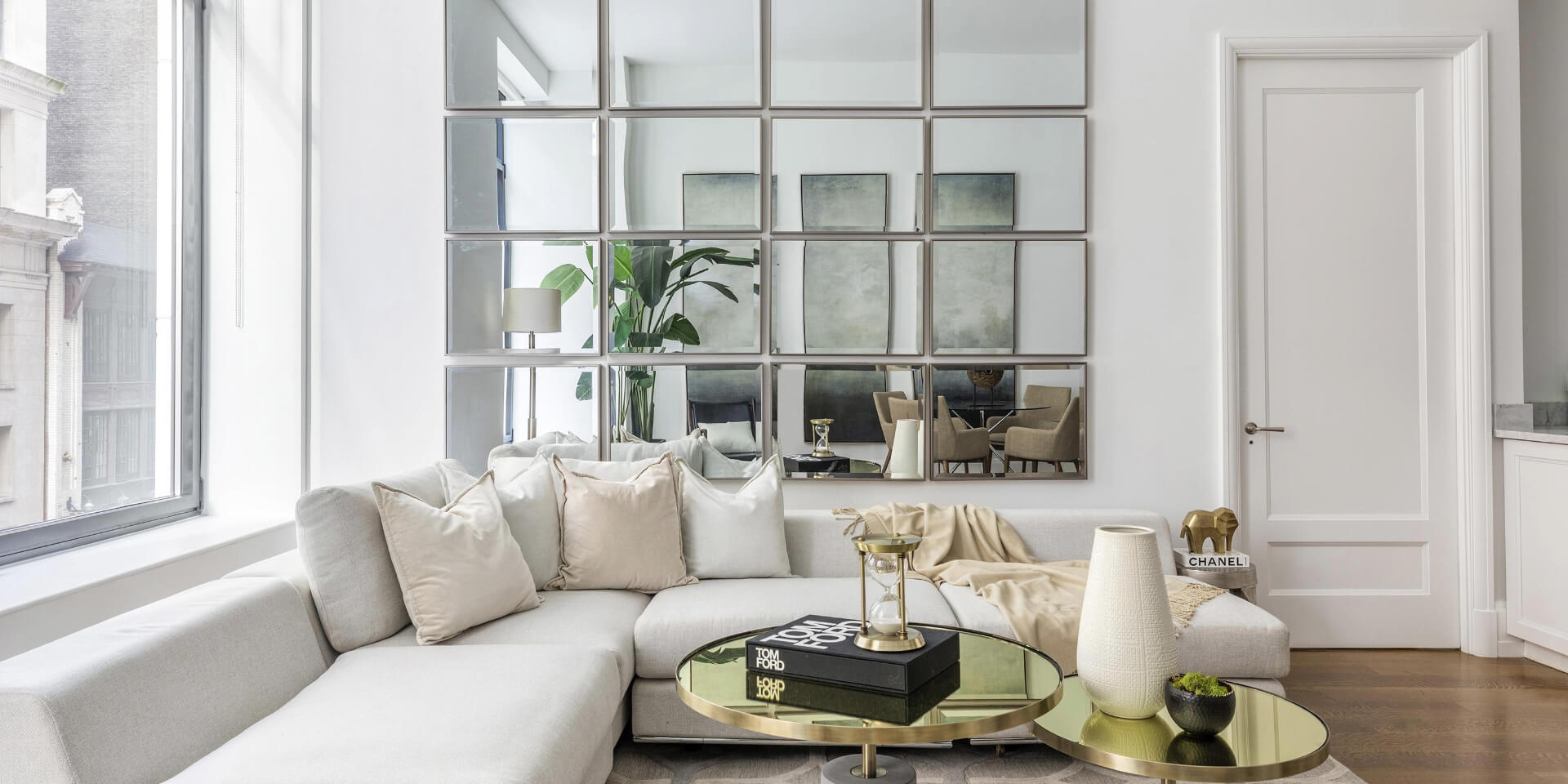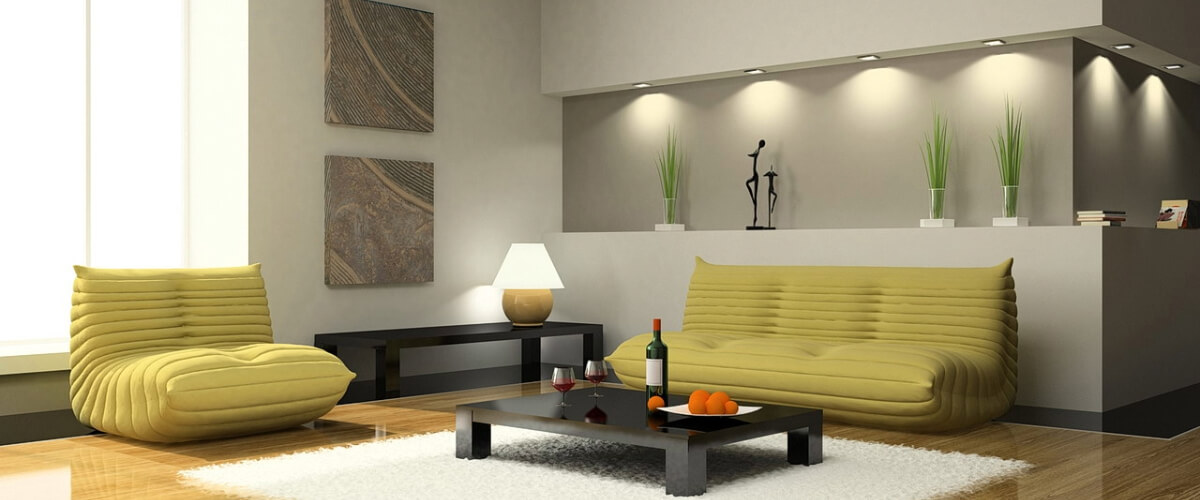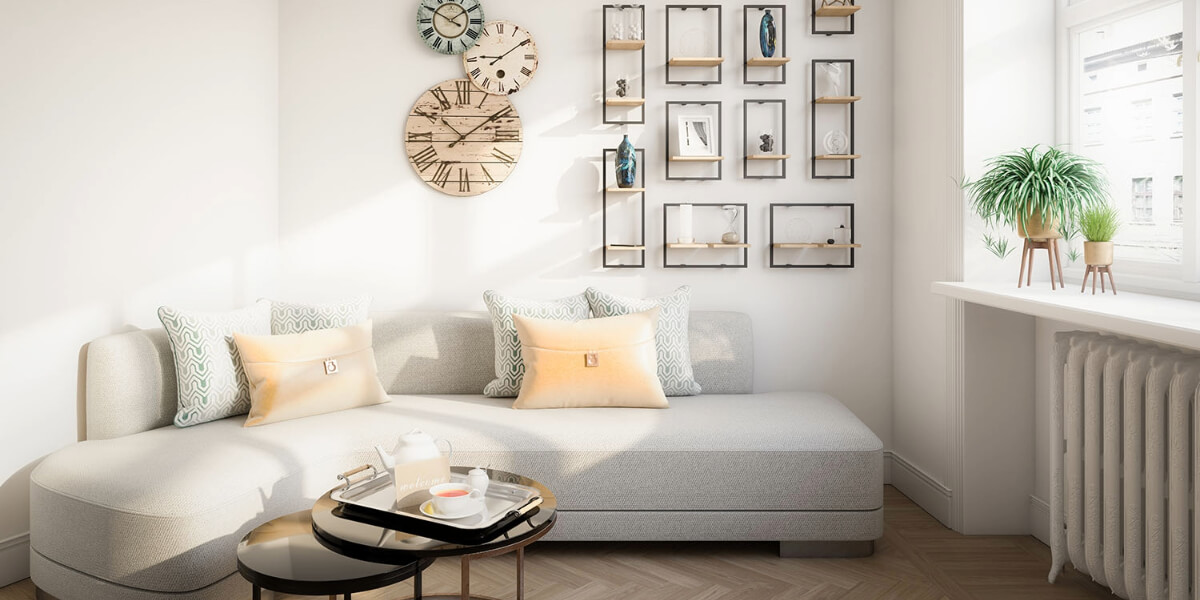
In the quest for a spacious and inviting home, the challenge often lies not in the square footage but in the perception of space. Whether you dwell in a cozy apartment or a sprawling house, visually expanding can truly transform how you experience your home, unlocking its full potential and creating an environment that feels expansive, harmonious, and uniquely yours.
What are practical ways of visually increasing your home space?
Visually expanding home space involves strategic design choices that create the illusion of a larger, more open environment.
Choose Light Colors
Embrace a light color palette throughout the space, including walls, ceilings, and furnishings, creating an airy and open ambiance. Soft, neutral tones such as whites and light grays reflect light, visually expanding the room. Introduce subtle pops of color with accessories or artwork to add interest without overwhelming the space.
Utilize Mirrors
Strategically position mirrors to reflect natural light and create depth within the room. Place them opposite windows or light sources to maximize their reflective properties. Experiment with different shapes and sizes to enhance the visual impact and add elegance to the decor.

Optimize Furniture Placement
Arrange furniture to maximize floor space and promote easy movement throughout the room. Consider the scale of each piece, opting for smaller options in compact spaces to prevent overcrowding.
Declutter and Organize
Keep surfaces clutter-free by storing items out of sight in cabinets, drawers, or decorative storage. Choose multifunctional furniture with built-in storage solutions to maximize space. Maintain a regular cleaning routine to uphold a sense of openness and tranquility.
Incorporate Vertical Space
Install tall shelving units or wall-mounted storage systems to maximize vertical space and draw the eye upward. Use floor-to-ceiling curtains to elongate windows and create the illusion of higher ceilings. Experiment with vertical patterns or textures to visually elongate walls.
Create Visual Continuity
Choose flooring materials that flow seamlessly from room to room, creating a cohesive visual flow throughout the home. Use area rugs to define separate zones within open-concept living areas while maintaining harmony.
Add Greenery
Incorporate indoor plants strategically near windows or well-lit areas to add vitality and freshness to the space. Opt for low-maintenance plant varieties that thrive indoors, ensuring they remain a source of beauty without adding unnecessary maintenance tasks.

Does light influence the perception of the room?
The amount and quality of light in a space can significantly impact how spacious, welcoming, and comfortable it appears to occupants.
Adequate lighting can make a room feel larger and more open by illuminating all corners and reducing shadows. Bright spaces feel more inviting and expansive compared to dimly lit areas.
Besides, the quality of light, whether natural or artificial, affects the ambiance of a room. Natural light from windows creates a soft, diffused glow that can make a space feel airy and refreshing. On the other hand, warm artificial lighting can create a cozy and intimate atmosphere, while cool lighting can evoke a sense of modernity and spaciousness.
Furthermore, the interplay of light and shadow plays a pivotal role in establishing depth perception within a room.
Strategically positioned lighting fixtures have the ability to accentuate architectural details, furniture layouts, and decorative accents, infusing the space with captivating visual allure and a sense of dimension.